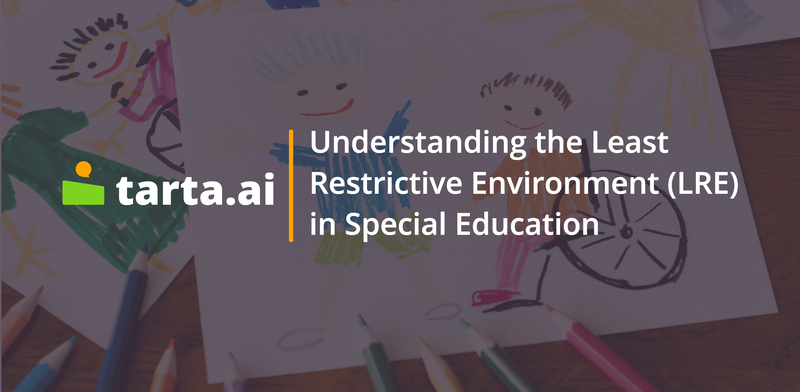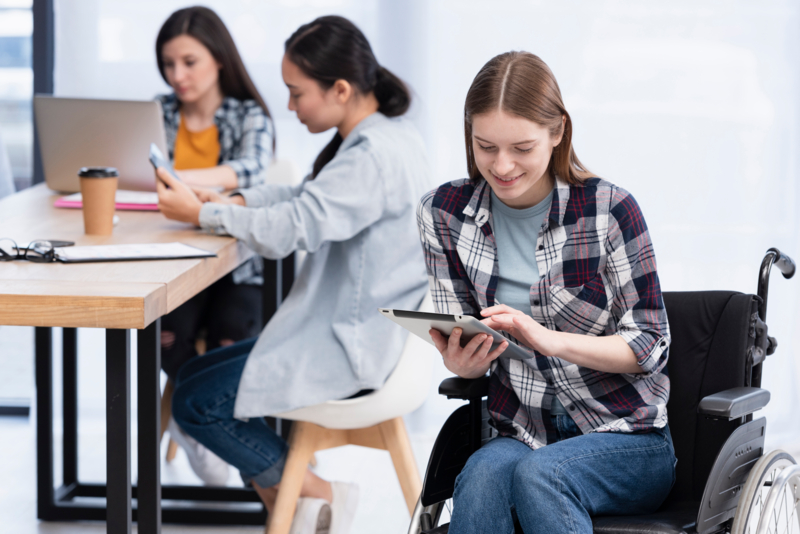Understanding the Least Restrictive Environment (LRE) in Special Education

Least Restrictive Environment (LRE) is a concept in education that refers to the practice of placing students with disabilities in educational settings that are as inclusive as possible. The LRE mandate is a federal requirement under the Individuals with Disabilities Education Act (IDEA) that all students with disabilities receive a Free Appropriate Public Education (FAPE) in the least restrictive environment appropriate to their unique needs.
What is the Least Restrictive Environment?
The LRE is the educational setting that provides students with disabilities with the maximum opportunities for interaction with non-disabled peers, while also meeting their individual needs for specialized instruction, related services, and assistive technology. LRE refers to the environment that allows students with disabilities to learn and participate in the general education curriculum to the greatest extent possible, while still receiving appropriate accommodations and modifications to help them succeed.
In general, LRE means that students with disabilities should be educated in the same classroom as their non-disabled peers to the extent possible. However, it does not mean that every student with a disability should be placed in a regular classroom without regard for their individual needs. The goal of LRE is to find a balance between the needs of the student with a disability and the opportunities for interaction with their non-disabled peers.
The LRE can vary by subject: A student may be able to participate in a general education classroom for one subject but require a more specialized setting for another. For example, a student with a hearing impairment may need to be in a resource room with an interpreter for math class but can participate
Different Types of the Least Restrictive Environment (LRE)
- Regular classroom with consultation: This is when a student with a disability attends a regular classroom with their non-disabled peers, and a special education teacher or other specialist provides consultation to the regular education teacher on how to best support the student's needs.
- Regular classroom with supplementary aids and services: In this scenario, a student with a disability attends a regular classroom with non-disabled peers and receives additional support and accommodations, such as assistive technology, modified materials, or an aide.
- Resource room: In this setting, a student with a disability attends a special education classroom for a portion of the day to receive additional instruction and support in specific subjects or skills.
- Separate classroom: This is when a student with a disability attends a special education classroom for the majority of the day to receive instruction and support tailored to their specific needs.
- Separate school: In this scenario, a student with a disability attends a school specifically designed for students with disabilities.

Photo: Freepik
Benefits of Least Restrictive Environment
The benefits of Least Restrictive Environment (LRE) are numerous for students with disabilities. Here are some of the benefits of LRE:
- Higher Academic Achievement: Research has shown that students with disabilities who are placed in inclusive settings have higher academic achievement levels than those who are placed in more restrictive environments. Inclusive classrooms provide students with disabilities with access to the general education curriculum and high-quality instruction, which can lead to improved academic outcomes.
- Improved Social Skills: Inclusive classrooms provide students with disabilities with more opportunities for social interaction with their non-disabled peers. This can lead to improved social skills, communication, and peer relationships.
- Increased Self-Esteem: Students with disabilities who are educated in inclusive settings have higher self-esteem and greater acceptance from their non-disabled peers. This can lead to improved confidence and a more positive self-image.
- Greater Access to Curriculum: Students with disabilities who are placed in inclusive classrooms have greater access to the general education curriculum. This can help them to develop the skills and knowledge needed to succeed in post-school life.
- Increased Post-School Success: Students with disabilities who are educated in inclusive settings have greater opportunities for post-school success. Inclusive classrooms can help students with disabilities to develop the skills and knowledge needed to enter the workforce or pursue post-secondary education.
- Improved Attitudes Toward Diversity: Inclusive classrooms can help to promote positive attitudes toward diversity and reduce stereotypes and prejudices. This can help to create a more accepting and inclusive society.
The LRE is determined on a case-by-case basis: Decisions about the LRE for individual students must be based on their unique needs and circumstances. This means that what constitutes the LRE for one student may not be the same as for another.
Legal Requirements
Under the Individuals with Disabilities Education Act (IDEA), there are legal requirements related to the Least Restrictive Environment (LRE) mandate. These requirements are designed to ensure that students with disabilities receive a Free Appropriate Public Education (FAPE) in the least restrictive environment appropriate to their individual needs. Here are some of the key legal requirements related to LRE:
- Continuum of Placement Options: School districts must provide a continuum of placement options to meet the unique needs of students with disabilities. The continuum includes a range of placement options, from regular education classrooms with appropriate supports and services to more restrictive settings, such as special education classrooms or separate schools.
- Individualized Education Program (IEP): The IEP is a legal document that outlines the educational goals and services needed to meet the unique needs of a student with a disability. The IEP team must consider the LRE when making decisions about the student's placement and services. The team must document why a less restrictive environment was not appropriate or available.
- Preference for Regular Education Classroom: The IDEA requires that, to the maximum extent appropriate, students with disabilities should be educated in the regular education classroom with appropriate supports and services. This means that placement in a regular education classroom should be considered first, before considering a more restrictive setting.
- Consideration of Potential Benefits: When making placement decisions, the IEP team must consider the potential benefits of placement in a less restrictive environment, including academic and non-academic benefits, such as socialization with non-disabled peers.
- Least Restrictive Environment Determination: The IEP team must make an individualized determination about the least restrictive environment appropriate for each student with a disability. The determination should be based on the student's unique needs and not based solely on the availability of programs or services.
- Periodic Review: The IDEA requires that the IEP team review the student's placement at least annually to ensure that the placement remains appropriate and that the student is making progress toward their goals.
Conclusion
The Least Restrictive Environment (LRE) is a concept that has been developed to ensure that students with disabilities are provided with the most inclusive educational environment possible. This concept is essential to ensuring that students with disabilities receive the appropriate education that meets their unique needs while ensuring they have the opportunity to interact with non-disabled peers. The benefits of LRE for students with disabilities are numerous, and the legal requirements for the LRE mandate are clearly defined under the IDEA. The goal of the LRE mandate is to ensure that all students with disabilities receive a Free Appropriate Public Education in the least restrictive environment appropriate to their unique needs.
- The Least Restrictive Environment (LRE) is a concept in education that refers to placing students with disabilities in educational settings that are as inclusive as possible while still meeting their individual needs.
- The goal of LRE is to find a balance between the needs of the student with a disability and the opportunities for interaction with their non-disabled peers.
- Different types of LRE settings include regular classroom with consultation, regular classroom with supplementary aids and services, resource room, separate classroom, and separate school.
- The benefits of LRE include higher academic achievement, improved social skills, increased self-esteem, greater access to curriculum, increased post-school success, and improved attitudes toward diversity.
- Under the Individuals with Disabilities Education Act (IDEA), there are legal requirements related to the LRE mandate, including providing a continuum of placement options, creating an Individualized Education Program (IEP), a preference for regular education classrooms, considering the potential benefits, making an individualized determination, and periodic review.
FAQ
What is Least Restrictive Environment (LRE)?
Least Restrictive Environment (LRE) is a concept in special education that refers to the idea that students with disabilities should be educated alongside their non-disabled peers to the greatest extent possible, while still receiving appropriate supports and services
What is the purpose of LRE?
The purpose of LRE is to ensure that students with disabilities have access to the same educational opportunities as their non-disabled peers, and that they are not unnecessarily segregated from their peers.
Who is eligible for LRE?
LRE applies to all students with disabilities who receive special education services under the Individuals with Disabilities Education Act (IDEA).
How is LRE determined for a student?
LRE is determined on a case-by-case basis, based on the unique needs of each student with a disability. The determination is made by the student's Individualized Education Program (IEP) team, which includes parents, educators, and other professionals who work with the student.